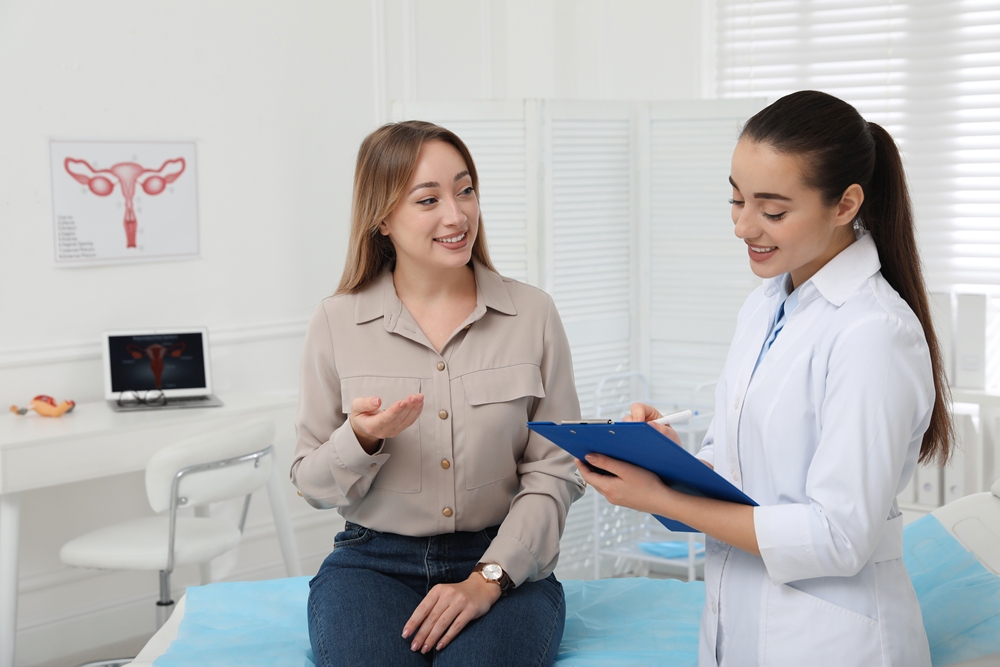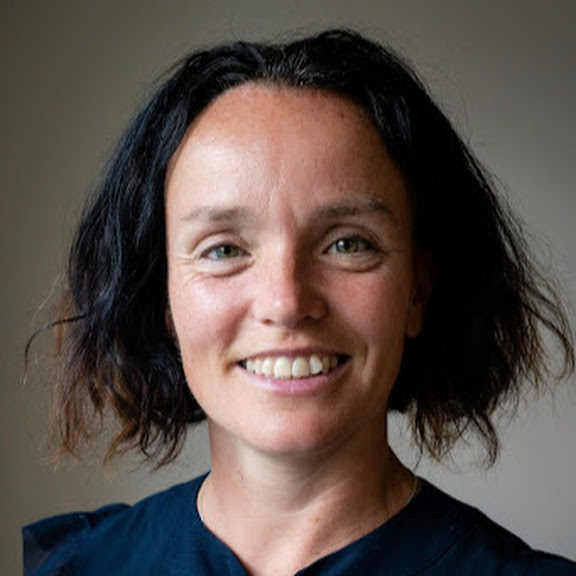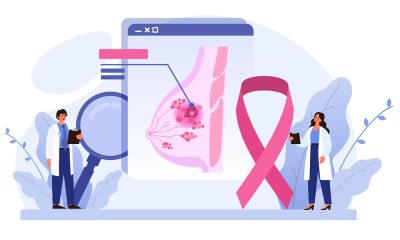Insight
The toxic period care crisis: 10 innovators making a difference
By Fard Johnmar, health futurist, strategist, and co-founder of the FemAging Project

Lead, arsenic and cadmium. All harmful heavy metals commonly found in wastewater — and tampons? Unfortunately, yes.
Earlier this year, researchers from the University of California conducted a first-of-its kind study examining tampons — both organic and non-organic — sold in the United States and Europe.
Organic tampons had higher levels of arsenic. Non-organic tampons had elevated lead concentrations. There is no known safe level of lead exposure.
Heightening concern about the presence of heavy metals in tampons is uncertainty about whether these contaminants are leaching into women’s bodies.
Surprisingly, while the U.S. Food and Drug Administration regulates tampons for their safety, manufacturers are not required to test products for contaminants.
While this study was shocking, there is growing evidence that many period care products may be contaminated.
For example, less well-known research conducted by the New York Times in 2023, found that nearly half of the 44 tampons, period underwear, menstrual cups, disposable and reusable menstrual pads it tested had some level of per- and polyfluoroalkyl substances (PFAS), better known as “forever chemicals.”
PFAS are associated with a range of health risks, including delayed puberty, lower bone mineral density and even type 2 diabetes in women.
The period care industry is also the source of another problem: environmental pollution.
Every month, around 1.8 billion people globally menstruate. Single-use period products create more than 200,000 metric tons of waste annually.
On an individual level, the average woman will dispose of more than 400 pounds of period product packaging during her lifetime.
Many are made of plastics, which contribute to the growing environmental problem of microplastics in ocean water.
How Have Consumers Reacted?
Concerns about heavy metals and the environmental impact of period care products may accelerate a growing shift in consumer preferences for more sustainable, healthy options.
In 2023, the Week reported that sales of tampons in the United Kingdom fell by 12 per cent over the previous five years.
Immediately after the publication of the toxic tampon study, sales of menstrual cups, which offer several advantages, including being reusable and environmentally friendly, surged.
Some retailers in the United States, such as Target, ran out of supply.
10 Innovators Working to Solve the Period Care Crisis
Some innovators have been working to address the health and environmental impacts of period care for decades.
One trailblazer is Susie Hewson, MBE who founded the period care company Natracare in 1989.
Natracare’s tampons and other period care products are regularly tested for contaminants, including heavy metals, PFAS and plastics.
Over the last decade, a range of other period care companies have emerged, many of them founded by women.
Below are nine other innovative, well-known, and rising companies focused on delivering innovative, environmentally friendly, and safe period care products to women from around the world.
- The Flex Co: An innovator in the menstrual cup industry, with a broad product portfolio of solutions, sold at over 25,000 retailers in the United States. Recently, Flex Co. ramped up production of its menstrual cups because of increased demand following the publication of the toxic tampons study. Location: United States | W: https://flexfits.com
- Vyld: This company is producing sustainable, marine biodegradable and healthy period products manufactured from seaweed. Location: Germany | W: https://www.vyldness.de
- Lemme Be: Launched in response to the growing need for health, safety, and comfort in period care, the company delivers sustainable menstrual cups, reusable period panties and other products. Location: India | W: https://lemmebe.com
- Inertia: A new South Korea-based period care company. They sell organic, sustainable micro-plastic-free sanitary pads using plant-based technology. Location: South Korea | W: https://inertiabio.com
- Lola: Lola sells sustainable products for period care, sexual wellness and vaginal health. The company is focused on delivering clean, non-toxic products with clear labels made without synthetic fibers, fragrance, chlorine or other additives. Location: United States | W: https://mylola.com
- Sunny: Sunny has developed a sustainable menstrual cup product that inserts like a tampon. Location: United States | W: https://sunnyperiod.com
- Rael: Menstrual care and feminine wellness company that provides pads, tampons, pantyliners and period underwear made of natural and organic ingredients.
Location: United States | W: https://www.getrael.com - Aisle: Aisle is an award-winning social impact business that specializes in sustainable alternatives to disposable menstrual products through their line of period underwear, washable cloth menstrual pads and menstrual cups.
Location: Canada | W: https://periodaisle.com - Trace: Offers a first-of-its kind sanitary pad with non-toxic, pesticide-free hemp fiber, grown by hand-selected farming partners. Location: United States | W: https://traceyourtampon.com
About the Author:
Fard Johnmar is a health futurist, strategist, and co-founder of the FemAging Project, a global initiative focused on driving women’s health innovation — especially for those aged 40+.
Data and insights in this article were sourced from Femalytics, an intelligence and membership platform for women’s health change-makers.
At Femalytics’ core is a growing database of thousands of market insights and more than 30,000 organizations across numerous categories relevant to women’s health.
Femalytics also features Femmaya, a unique AI assistant powered by the rich and robust Femalytics database.
Learn more about Femalytics and experience Femmaya for free at www.femalytics.com.
News
The rise of preventive gynaecology: What women need to know

Co-written By Dr Claire Gillvray and Tarang Majmudar, Welbeck Cambridge (2026)
Gynaecological cancers, cervical, ovarian, uterine, vaginal, and vulvar, pose a significant health risk across all age groups.
While treatment has advanced in recent years, early detection remains the single most crucial factor in improving survival, reducing the need for invasive treatments, and preserving quality of life.
Why Early Detection Matters
When gynaecological cancers are detected early, the five-year survival rate exceeds 90 per cent.
In contrast, late-stage diagnosis can reduce survival chances by more than half. Early detection truly can mean the difference between life and death.
In England, the introduction of cervical screening in 1998 and HPV vaccination in 2008 has drastically reduced the incidence and mortality associated with cervical cancer.
For endometrial cancer, postmenopausal bleeding is a red flag symptom, prompting timely medical intervention and generally resulting in early diagnosis.
Yet, ovarian and vulval cancers often go unnoticed.
Ovarian cancer’s vague symptoms such as bloating, abdominal discomfort, and appetite changes, are frequently mistaken for benign conditions.
Vulval cancer symptoms like itching or soreness are often overlooked, especially post-menopause.
To improve early detection, a threefold strategy is essential:
- Screening
- Symptom recognition
- Lifestyle modification
1. Screening
Cervical cancer is one of the few gynaecological cancers that is both preventable and detectable through routine screening.
Caused primarily by the human papillomavirus (HPV), cervical cancer rates have dropped significantly due to HPV vaccination and cervical screening programmes.
In 2023, NHS England outlined its goal to eliminate cervical cancer by 2040.
Despite high HPV vaccination coverage (approximately 80 per cent), screening uptake has declined, particularly among younger women, where participation has dropped to 70 per cent.
The upcoming introduction of self-sampling for HPV aims to address this gap and improve participation.
However, no effective population-wide screening methods currently exist for ovarian, uterine, vaginal, or vulvar cancers.
This reality reinforces the importance of self-awareness, recognising symptoms, and attending regular gynaecological check-ups.

Dr Claire Gillvray
2. Recognising Warning Symptoms
Awareness of key symptoms is vital for early diagnosis:
- Cervical cancer: abnormal vaginal bleeding, post-coital bleeding, unusual discharge
- Ovarian cancer: persistent bloating, pelvic discomfort, urinary urgency, loss of appetite, weight loss
- Uterine cancer: postmenopausal bleeding, irregular or heavy periods
- Vaginal cancer: unusual bleeding or discharge
- Vulvar cancer: itching, pain, lumps, or ulceration
Although many of these symptoms can have benign causes, persistence or change from the norm should always prompt medical review.
Historically, women’s gynaecological symptoms have often been minimised or dismissed.
This has led to diagnostic delays for conditions like endometriosis, which still takes nearly 9 years on average to diagnose.
Young women are particularly vulnerable, with symptoms too often attributed to hormonal changes or stress.
Rather than placing blame, we must push for better education, research funding, and structural support to help clinicians, especially in primary care, identify early warning signs across diverse age groups and health backgrounds.
3. Lifestyle and Risk Reduction
Healthy habits can reduce the risk of several gynaecological conditions:
- Maintain a healthy weight
- Eat a balanced, nutrient-rich diet
- Avoid tobacco and limit alcohol
- Get vaccinated for HPV and practice safe sex
- Attend regular health checks
- Manage conditions like diabetes and hypertension
- Seek genetic counselling if there’s a family history of breast, bowel, or gynaecological cancers
Prevention isn’t only about medical care, it’s also about empowering people with the knowledge and tools to take charge of their health.
The Role of Men and Partners in Gynaecological Health
Preventative gynaecology isn’t a “women-only” issue. Men and partners play an essential role in recognising early warning signs, supporting open health conversations, and advocating for equitable care.
Awareness campaigns must include all genders, so that everyone can support informed decisions, challenge stigma, and help normalise seeking help early.
The Rise of FemTech
Preventative gynaecology is being transformed by FemTech with technologies including:
- Menstrual tracking apps
- Wearable hormone monitors
- At-home diagnostics
- AI-powered symptom tools
These innovations give people more insight into their own health and more confidence when seeking care.
Yet, technology alone isn’t enough. It must be paired with systemic changes in how symptoms are recognised and responded to.
Chronic pain, abnormal bleeding, and fatigue are too often normalised, leading to prolonged suffering and delayed diagnoses.
Empowering Through Self-Advocacy

Tarang Majmudar
A central tenet of preventative gynaecology is self-advocacy. This involves:
- Know your normal—cycles, mood, energy, libido
- Use tech to track symptoms and patterns
- Push for answers when something feels “off”
- Recognise that stress, sleep, and environment all play a role in health
Empowerment also means expecting and demanding respectful, informed care. It’s about being heard, not dismissed.
Prevention in Action: Real Progress
We’re already seeing the benefits of preventative measures:
- The HPV vaccine is reducing cervical cancer rates significantly.
- Early hormone therapy during perimenopause can protect bone, brain, and heart health.
- Growing awareness of reproductive conditions is shortening the diagnostic journey for many.
When supported by data and technology, people can have more meaningful conversations with healthcare providers and make informed choices about their bodies and care.
Looking Forward
For individuals:
Use digital tools to track trends and flag changes. Treat this data as a conversation starter, not a diagnosis.
For clinicians:
Engage with new technologies. Ask proactively about menstrual, hormonal, and sexual health.
For innovators:
Design inclusive, accessible tools for all bodies, all ages, all ethnicities.
For policymakers and researchers:
Support funding for research that focuses on earlier detection, better diagnostics, and equitable access to care.
The future of gynaecological care is not just about reacting to disease, it’s about preventing it, detecting it early, and empowering everyone to take control of their health.
Preventative gynaecology is more than a trend, it’s a necessity.
With education, accessible tools, cultural change, and collaborative action, we can make early detection the norm, not the exception.
Diagnosis
15k breast cancer patients a year could benefit from genome sequencing

Whole genome sequencing could identify unique genetic features to guide treatment for more than 15,000 breast cancer patients each year in the UK, new research suggests.
The technique, which analyses DNA from both patient and tumour to identify genetic changes, helps reveal what drives each cancer and highlights potential treatment targets or resistance.
Scientists at the University of Cambridge used data from almost 2,500 women across England held in the National Genomic Research Library – one of the world’s largest resources of its kind, run by Genomics England.
The data came from the 100,000 Genomes Project and was linked to clinical and mortality records, tracking outcomes over five years.
They found that 27 per cent of breast cancer cases had genetic features that could help guide personalised treatment immediately, either using existing drugs or through clinical trials – equivalent to more than 15,000 women a year in the UK.
Professor Serena Nik-Zainal is from the Department of Genomic Medicine and Early Cancer Institute at the University of Cambridge.
She said: “The UK is a genuine world-leader in its ability to do whole genome sequencing through the NHS Genomic Medicine Service.
“Now that we have population-level evidence of how impactful whole-genome sequencing could be, we have the potential to make a difference to thousands of patients’ lives every year, helping tailor their care more precisely, giving more treatment to those who need it and less to those who don’t.”
Among the key findings were HRD (homology-directed repair deficiency) – a DNA repair issue found in 12 per cent of breast cancers – unique mutations that could be targeted with specific drugs, signs of resistance to hormone therapy, and mutational patterns suggesting weaknesses that treatments could exploit.
An additional 15 per cent of cases had features useful for future research, such as problems in other DNA repair pathways, equating to about 8,300 women a year.
The analysis also offered insights into prognosis. In ER+HER2– breast cancers – the most common subtype, accounting for roughly 70 per cent of diagnoses – researchers found strong genetic indicators of tumour aggressiveness.
Major structural DNA changes, APOBEC mutational signatures (a form of DNA damage) and mutations in the cancer gene TP53 were all linked to higher death risk.
These genetic markers proved more predictive than traditional measures such as age, cancer stage or tumour grade.
Using these results, the researchers developed a framework to help clinicians identify which patients need more aggressive treatment and which could safely have less.
Around 7,500 women a year with low-grade tumours could benefit from more intensive therapy.
Professor Matt Brown, chief scientific officer of Genomics England, said: “This promising research further demonstrates the potential of genomics in improving cancer treatment outcomes for many people.
“Rapid advances in genomics are already ushering in the next generation of personalised cancer medicine. Not only can a patient’s genes guide precision treatment decisions that will best serve them, but we could improve how we match people up to clinical trials and help more patients access innovative treatments.
“Research like this highlights the value of the National Genomic Research Library and how understanding our genes can provide a real boost to the way we diagnose and treat disease.
“It’s all thanks to the contribution of participants and NHS partners in the 100,000 Genomes Project – the consented clinical and genomic data opens the door for incredible research opportunities.”
News
Ancient herb to modern must-have: Why ashwagandha is capturing UK women’s attention

Ashwagandha, a herb long used in Ayurvedic practice, has become one of the most talked-about natural supplements this year.
According to recent search trend data, UK interest in ashwagandha has more than doubled in the past six months, highlighting growing curiosity around its potential to support stress, sleep, and energy levels.
Supplement expert, Charava, says this surge reflects a broader shift towards adaptogens in everyday routines.
Its medical writer, Dr. Sidra Samad, notes: “Ashwagandha has been studied for its adaptogenic properties, its potential to help the body respond to stress.
“Women are increasingly exploring it for energy, hormonal balance, and overall vitality. But understanding dosage, safety, and product quality is essential.”
Why ashwagandha is gaining attention:
- Early studies suggest potential benefits for energy, mood, and sleep support.
- Its adaptogenic nature appeals to women balancing busy work and home lives.
- Social platforms and wellnessmedia are spotlighting it as part of stress management and self-care routines.
Top 10 ashwagandha benefits for women
- Energy and stamina
Ashwagandha is often linked to improved energy and reduced fatigue. For women balancing work, family, and personal commitments, it may help support stamina and overall resilience. - Antioxidant support
Rich in antioxidants, ashwagandha may protect the body from oxidative stress – an important factor in ageing and long-term wellness. - Sleep and relaxation
Traditionally used to calm the mind and body, ashwagandha may improve sleep quality by reducing stress and anxiety, helping you fall asleep faster and stay asleep longer. - Brain health
Early research suggests ashwagandha can support mood, focus, and memory. By helping the body manage stress, it may positively influence cognitive performance and mental clarity. - Heart health
Studies indicate ashwagandha may aid cardiovascular wellnessby supporting healthy cholesterol, triglyceride levels, and lipid metabolism, while reducing inflammation and oxidative stress. - Sexual health and fertility
This herb has long been associated with improved libido and arousal. It may also promote hormonal balance and reproductive wellness, although further research is needed. - Hormonal balance
Ashwagandha’s adaptogenic properties can help regulate cortisol and support the endocrine system, which may lead to more stable hormone patterns and regular cycles. - PMS relief
By easing stress and inflammation, ashwagandha may help with PMS symptoms such as fatigue, cramps, irritability, and bloating, making the premenstrual phase more manageable. - PCOS support
For women with PCOS, ashwagandha may aid in hormone regulation and metabolic balance, potentially improving menstrual regularity and overall wellbeing. - Menopause support
Ashwagandha may help reduce menopausal symptoms by supporting hormone balance and easing both physical and psychological discomfort, contributing to improved quality of life.
When to take it
The best time to take ashwagandha depends on your goals. For stress relief or better sleep, take it in the evening.
To support energy and vitality, the morning will work better. For hormonal balance, splitting the dose between morning and evening can help maintain consistent levels. Choosing a high-quality, root-only extract such as KSM-66 ensures both safety and potency.

 News4 days ago
News4 days agoScientists turn human skin cells into eggs in IVF breakthrough

 News5 days ago
News5 days agoFDA plans to revise black box warning on menopause hormone therapies

 Hormonal health5 days ago
Hormonal health5 days agoDaily pill could delay menopause ‘by years,’ study finds

 News4 days ago
News4 days agoMothers’, not fathers’, mental health directly linked to their children’s, study shows

 Insight3 days ago
Insight3 days agoManagers still unprepared to discuss menstrual health, study finds

 Entrepreneur1 day ago
Entrepreneur1 day agoAI-powered women’s health companion Nexus launches in UK

 News3 days ago
News3 days agoAncient herb to modern must-have: Why ashwagandha is capturing UK women’s attention

 News3 days ago
News3 days agoDrug improves survival in triple-negative breast cancer




















